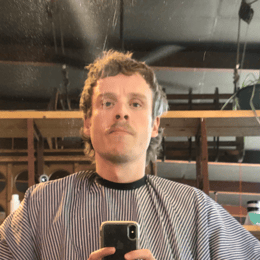The most authoritative answer in 2024
-
As a skincare and aesthetic technology expert with extensive knowledge in the field, I'm often asked about the workings of Intense Pulsed Light (IPL) therapy. IPL is a versatile and widely used treatment for various skin concerns, including hair removal, skin rejuvenation, and the treatment of vascular and pigmented lesions. Here's a comprehensive look at how IPL works, its applications, and the science behind it.
Step 1: Understanding IPL Technology
Intense Pulsed Light (IPL) is a non-laser light therapy that emits multiple wavelengths of light. Unlike a laser, which produces a single wavelength, IPL provides a broad spectrum of light. This broad spectrum allows IPL to target a variety of chromophores (pigments) in the skin, making it suitable for multiple skin treatments.
The Science Behind IPL
The fundamental principle of IPL is photothermolysis, which involves the absorption of light energy by a target (in this case, the pigment in the hair follicle or skin lesion) and the conversion of that light into heat. This heat then damages or destroys the target cells.
Hair Removal
In the context of hair removal, IPL targets the pigment (melanin) in the hair. The light is absorbed by the pigment in the hair, which quickly turns to heat. This heat is then transferred to the hair follicle, damaging the germinative cells responsible for hair growth. By targeting the hair follicle in its active growth phase (anagen phase), IPL can effectively reduce hair regrowth.
Skin Rejuvenation
For skin rejuvenation, IPL can target both melanin (in pigmented lesions) and hemoglobin (in vascular lesions). The heat generated can coagulate proteins and stimulate collagen production, leading to the improvement of skin texture and the reduction of fine lines and wrinkles.
Vascular and Pigmented Lesions
IPL is also effective in treating vascular lesions like rosacea and spider veins. The light is absorbed by the hemoglobin in the blood vessels, causing the vessels to collapse and gradually disappear.
Step 2: The IPL Procedure
The IPL procedure is relatively simple and non-invasive. A device is used to deliver pulses of light to the skin. The practitioner will typically apply a cooling gel to the skin and use a device that has a glass window to make contact with the skin. The light pulses are then delivered in a quick, flash-like manner.
Safety and Efficacy
IPL is considered safe when performed by a trained professional. However, as with any procedure, there are potential side effects such as discomfort, redness, and temporary pigment changes. It's important to have a consultation and patch test before undergoing any IPL treatment.
Step 3: Aftercare and Results
After an IPL treatment, it's crucial to protect the skin from sun exposure, as the skin can be more sensitive to light. Most people notice an improvement in the treated area after just a few sessions, but the number of sessions required can vary depending on the individual and the specific condition being treated.
In Summary
IPL is a powerful tool in the field of dermatology and aesthetics, offering a range of benefits for hair removal, skin rejuvenation, and the treatment of various skin lesions. Its versatility, safety profile, and non-invasive nature make it a popular choice for many seeking cosmetic procedures.
read more >>+149932024-05-07 16:46:34 -

-
Lucas Scott——Works at Facebook, Lives in Menlo Park. Holds a degree in Computer Engineering from Stanford University.
As with all light based treatments, IPL works by emitting a wavelength into the skin, which in the case of hair removal targets pigment. ... "The light is absorbed by the pigment in the hair. It quickly turns to heat which then kills the growing cells that make the hair," Thomas adds.Jan 14, 2015read more >>+119962023-06-12 16:31:07
About “色素、被头、皮肤”,people ask:
- 30回复How much do store managers make at Walmart??
- 77回复How much does it cost to start a Starbucks??
- 97回复How do IPL team owners make money??
- 16回复How many cows are killed a day in the world??
- 16回复What is the starting wage at Costco??
- 48回复How many hamburgers does Mcdonald's sell in a day??
- 61回复What does a manager at Mcdonald's do??
- 46回复How much do they pay at Aldi??
- 44回复How many hamburgers has Mcdonald's sold to date??
- 45回复What percentage does a manager get??
- 45回复How much does an assistant manager at Walmart make??
- 97回复Do IPL treatments hurt??
- 52回复How much does the CEO of Walmart make a year??
- 98回复How much does the CEO of Mcdonald's make in a year??
- 51回复How much money do you make owning a Mcdonalds??
READ MORE:
- +1963How much does the owner of Mcdonald's make a year?
- +1350How much does a Mcdonald's franchise make a day?
- +1639What is the starting wage at Costco?
- +1592What does a manager at Mcdonald's do?
- +1621How much does an assistant manager at Walmart make?
- +1549How much does the CEO of Mcdonald's make in a year?
- +1542What is the salary of a Walmart store manager?
- +1609How much do they pay at Aldi?
- +1356How Much Does Starbucks pay for their employees?
- +1949How much do Walmart employees make a month?
- +1432How much does a Mcdonald's manager make a year?
- +1875Who is the owner of Mc Donald?
- +1653How do IPL team owners make money?
- +1998How much does a Mcdonald's franchise owner make a year?
- +1700How much money do you make owning a Mcdonalds?
QuesHub is a place where questions meet answers, it is more authentic than Quora, but you still need to discern the answers provided by the respondents.







